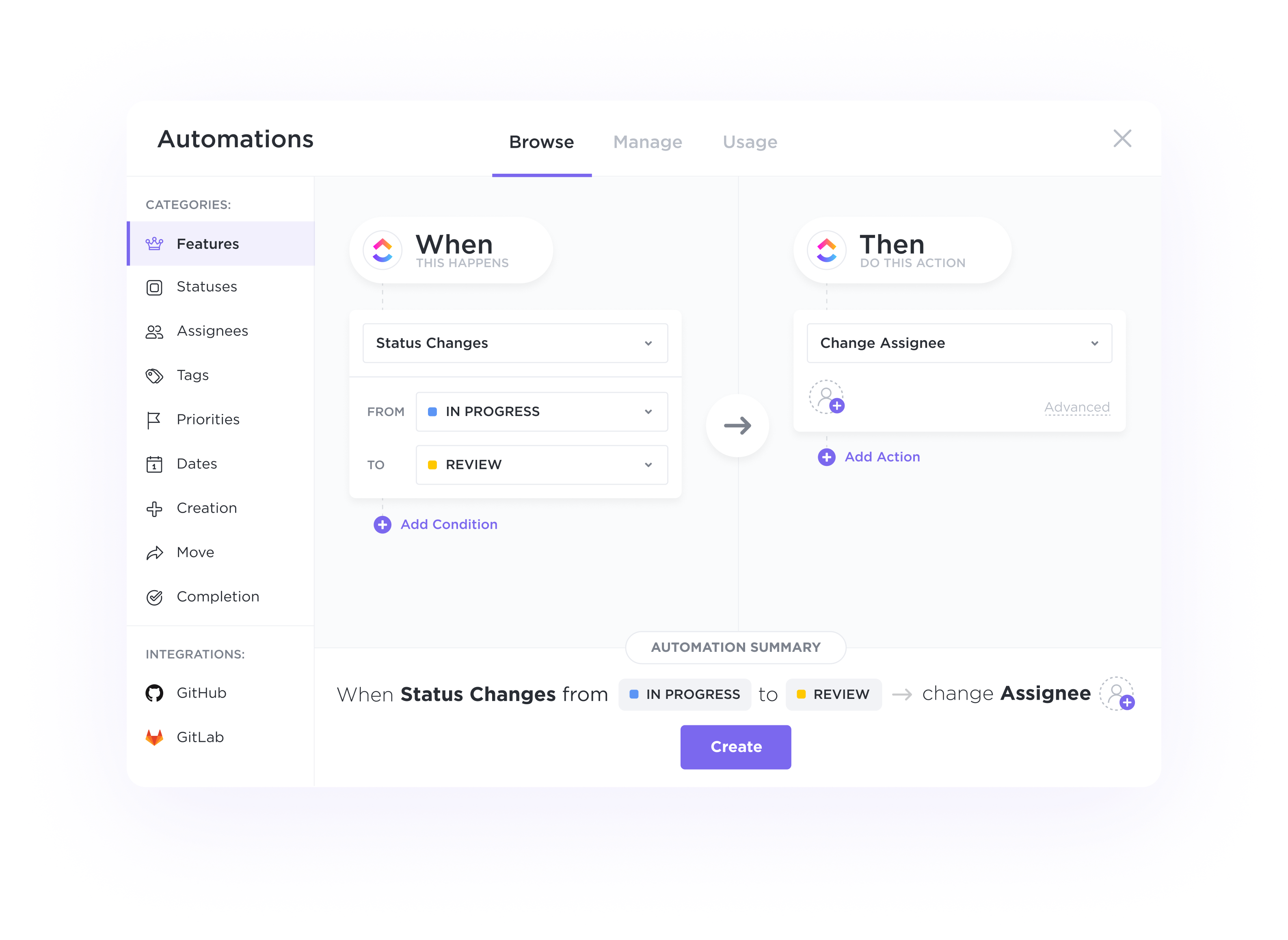Automations
Automate handoffs, status updates, and more.
Automatically assign tasks for each stage of your pipeline, trigger status updates based on activity, and switch priorities to alert your team on where to focus next.

Gantt Charts
Revolutionize your healthcare practice with our customized CRM system built using ClickUp. Streamline patient interactions, improve communication among staff, and enhance overall efficiency. Take your healthcare services to the next level with our innovative CRM solution powered by ClickUp.
Free forever. No credit card.
Automations
Automatically assign tasks for each stage of your pipeline, trigger status updates based on activity, and switch priorities to alert your team on where to focus next.

CRM Views
Manage everything from sales pipelines, customer engagement, and orders with ClickUp's 10+ highly flexible views. Easily track and manage your accounts on a List, Kanban Board, Table view, and more.

A CRM designed for healthcare must adhere to strict HIPAA regulations to ensure patient data security and confidentiality. It provides secure storage, access controls, and audit trails to meet compliance requirements and safeguard sensitive information.
CRMs in healthcare help in building and maintaining relationships with patients. They track patient interactions, appointments, medical history, preferences, and follow-up care, allowing healthcare providers to deliver personalized and timely care.
Managing appointments efficiently is crucial in healthcare. A CRM streamlines appointment scheduling, sends reminders to patients, and optimizes the utilization of healthcare providers' time, reducing no-shows and improving overall patient satisfaction.
Healthcare often involves referrals between different specialists or facilities. A CRM facilitates seamless referral management, ensuring timely communication between healthcare providers, tracking the referral status, and enhancing collaboration for better patient care.
CRMs offer analytical tools to track patient outcomes, treatment effectiveness, revenue streams, and operational efficiencies. These insights help healthcare organizations make informed decisions, improve patient care quality, and optimize resource allocation.
With the rise of telemedicine, a CRM can integrate telehealth platforms, enabling healthcare providers to conduct virtual consultations, share medical records securely, and communicate with patients remotely. This integration enhances accessibility to care and patient engagement.
CRM software in healthcare can enhance patient engagement and satisfaction by enabling personalized communication, tracking patient interactions and preferences, streamlining appointment scheduling, providing access to health information, and ensuring timely follow-ups and reminders for better care coordination and outcomes.
Yes, CRM software can help healthcare organizations streamline administrative tasks and processes by centralizing patient information, automating appointment scheduling, improving communication with patients, and enhancing overall efficiency in managing patient care.
Key features of using CRM software in healthcare settings include patient data management, appointment scheduling, automated reminders, personalized communication, and analytics for patient insights. Benefits include improved patient care coordination, enhanced patient engagement, streamlined administrative processes, and better decision-making based on data-driven insights.